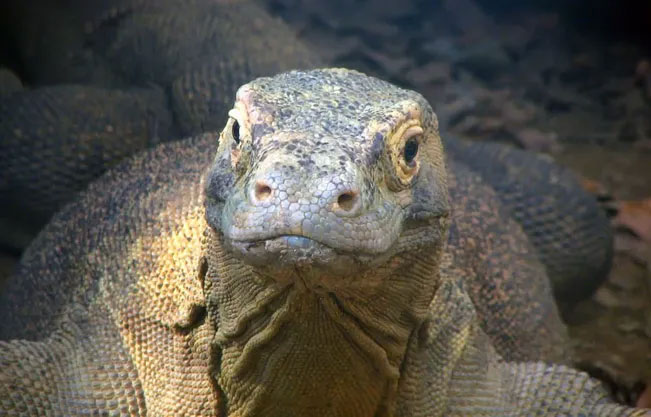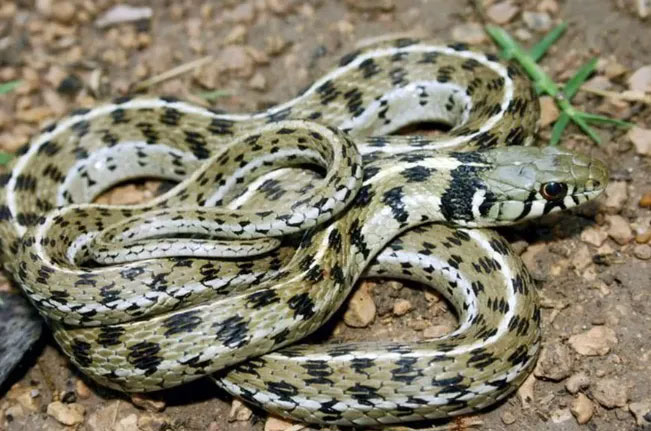The colorful animal kingdom never ceases to surprise us, including the fact that many species can reproduce and produce offspring without the need for male sperm.

Komodo Dragons can give birth without the presence of a male.
An Asian water dragon hatched from an egg at the Smithsonian National Zoo shocked many. Although the female had never mated with any other male water dragon, genetic testing revealed that the hatchling was born through a reproductive process known as parthenogenesis.
Parthenogenesis is a Greek term meaning “virgin birth,” and it refers to asexual reproduction in females. While many people associate this reproductive behavior with science fiction or religion, the process is surprisingly common among various organisms, including plants, insects, fish, reptiles, and even birds. Mammals, including humans, require certain genes from sperm to form offspring, and mammals are particularly incapable of parthenogenesis.
Producing Offspring Without Sperm
Sexual reproduction involves a female and a male, each contributing genetic material in the form of eggs or sperm to create a unique generation of offspring. Most animal species reproduce sexually, but some can produce eggs containing all the necessary genetic material for reproduction.
Offspring from these species, including certain wasps, crustaceans, and lizards, reproduce solely through parthenogenesis and are referred to as obligate parthenogens.
A significant number of species undergo spontaneous parthenogenesis, particularly among animals kept in zoo environments, such as the Asian water dragon at the National Zoo in the U.S. or blacktip reef sharks at the Virginia Aquarium.
Scientists have discovered that spontaneous parthenogenesis can be a heritable trait, meaning that females that reproduce through this method are more likely to have daughters that can do the same.
How can females fertilize their own eggs?
For parthenogenesis to occur, a series of cellular events must successfully take place. First, females must be capable of producing eggs (oogenesis) without stimulation from sperm or mating activities. Second, the eggs produced by the female need to begin developing spontaneously, forming an early-stage embryo. Finally, the eggs must successfully hatch.

In some cases, parthenogenesis allows females to create their own mates.
Each step of this process has a certain failure rate, particularly the second step, which requires the chromosomes within the egg to duplicate, ensuring the complete set of genes for the developing offspring. Additionally, the egg may be “falsely fertilized” by residual cells from the egg production process known as polar bodies. Any method that initiates embryo development will determine the genetic similarity between the mother and her offspring.
The triggers for parthenogenesis are not yet fully understood, but they seem to include environmental changes. In species capable of both sexual and parthenogenetic reproduction, such as aphids, stressors like overcrowding and predation can cause females to switch from asexual to sexual reproduction. In a type of freshwater zooplankton, high salinity may trigger this transition.
Advantages of Self-Reproduction
Although spontaneous parthenogenesis appears to be rare, it offers several advantages for females. In some cases, it may allow females to create their own mates.
The sex of the hybrid offspring is determined in a manner similar to that within the species itself. For organisms where sex is determined by chromosomes, such as female XX and male XY in some insects, fish, and reptiles, a female can produce another female solely with the existing sex chromosomes, meaning that offspring will always be female with XX chromosomes. However, for organisms where females have ZW sex chromosomes (such as in snakes and birds), all offspring will carry ZZ chromosomes, predominantly producing males, with WW being the rarer female.
Between 1997 and 1999, a boa constrictor kept at the Phoenix Zoo gave birth to two male offspring, which are still alive today. If a female mates with a male produced through parthenogenesis, it will result in inbreeding, leading to a range of genetic issues. However, from an evolutionary perspective, this method is better than having no females available for mating. The ability of a female to produce a male through parthenogenesis suggests that asexual reproduction in nature may be much more common than previously imagined by scientists.

The sex of the hybrid offspring is determined in a similar manner.
For a long time, biologists have observed that obligate parthenogenetic species often die from disease, parasites, or changes in their habitat. Inbreeding in heterozygous species seems to contribute to their short evolutionary processes.
Research into parthenogenesis aims to understand why some species can both mate and reproduce asexually to survive and maintain their lineage. Additionally, it seeks to answer whether sporadic sexual reproduction is sufficient for a species to persist.


















































